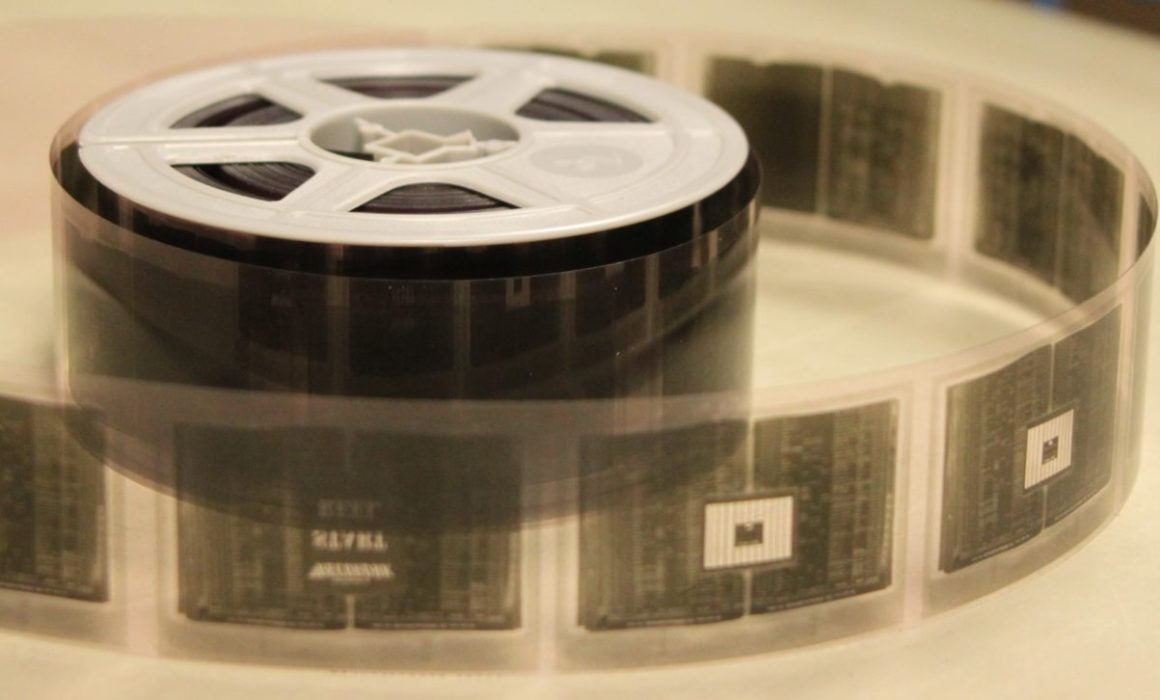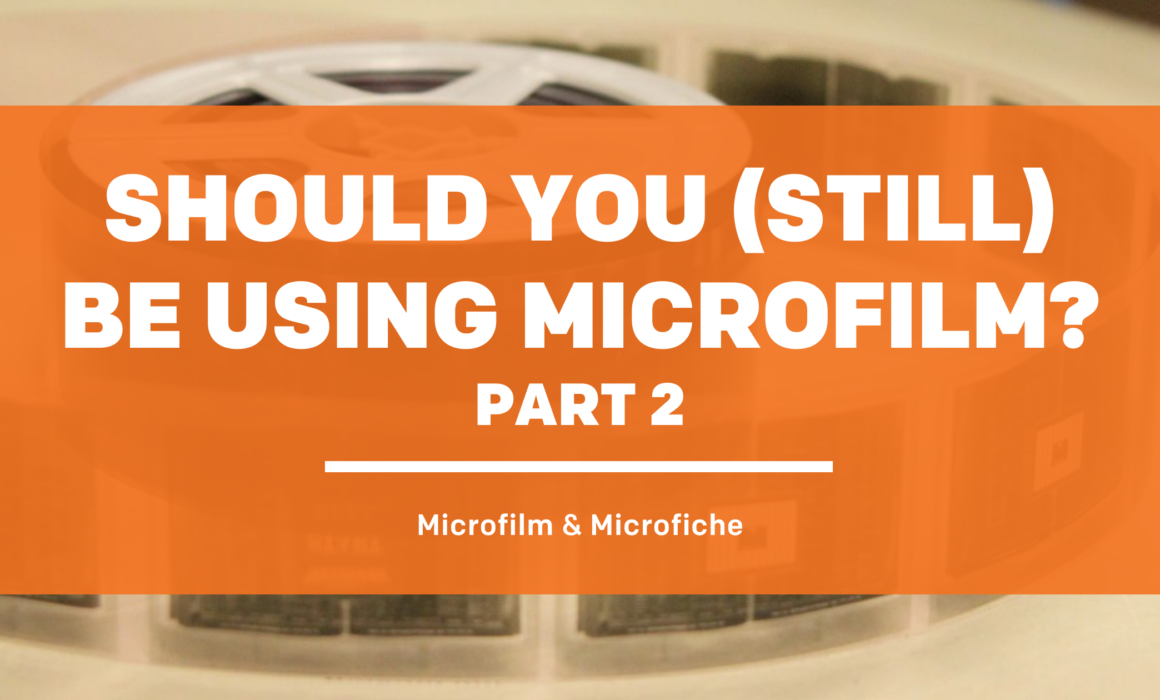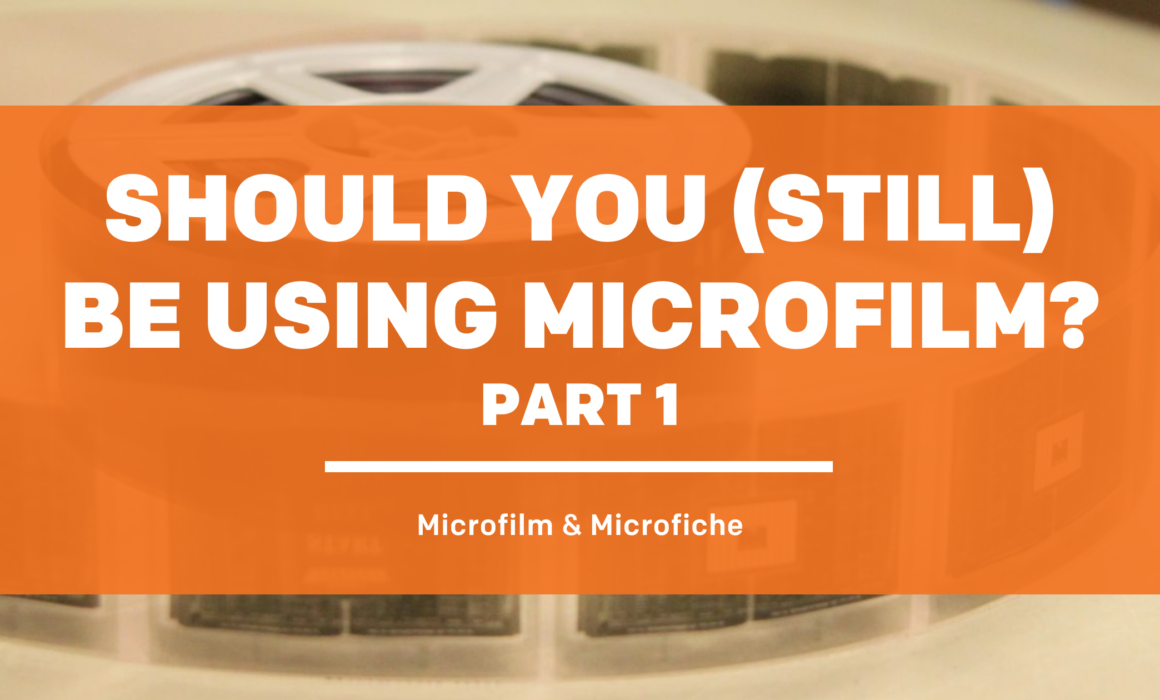Top 5 Reasons to Digitize Your Microfilm
Microfilm is a form of film technology that uses photographic methods to store documents, images and other materials in a very small format. Before the advent of affordable digital technology, microfilm and microfiche were your best option for compact information storage. After digital computing exploded onto the scene in the 90s, however, it quickly became a better option in every way.
In this article, we’ll break down the top 5 advantages of digital that caused this quick change; benefits which you can still leverage by digitizing your microfilm today.
5 – Storability
Digital files are, quite simply, much easier to store than microfilm. You can keep them on your hard drive or in the cloud, with virtually no physical space needed to contain them. This is especially useful for large organizations and institutions that may have hundreds of microfilm reels with thousands of documents stored on them.
For many organizations, converting their paper files to microfilm or microfiche formats was a decision originally made to save storage space. A single reel of compact microfilm can hold over 40,000 page-images in a space the size of a hockey puck, and a sheet of microfiche can store dozens of page-images in a sheet only a few inches wide.
Both are far more space-efficient than paper, but neither has anywhere near the storage efficiency of digital. A single-terabyte hard drive, which takes up about as much space as a microfilm reel, if not less, can hold over 83,300,000 pages of text. That’s the equivalent of over 2,000 microfilm reels in as much or less space as is taken up by just one.
If you choose to use cloud storage instead of keeping your files on your own hard drives, the amount of space you need to commit to information storage goes from very little to absolutely none. Fast, reliable, and secure internet connections make cloud storage a practical option for anyone, regardless of how much or how little they need to store.
4 – Flexibility
Digital files are more flexible than microfilm in that they are much easier to search, manipulate and use in different contexts. You can edit them directly or extract images from them with ease, as well as convert them into other file formats. This means you can store your documents in a variety of ways and use them for multiple purposes.
With microfilm or microfiche, on the other hand, it is much more difficult to manipulate or search through the content. The best way to access information stored in this format is by manually scrolling through frame-by-frame with a magnifying device.
Digital files, on the other hand, can be easily searched with keywords or phrases and quickly accessed from any device connected to the internet. This makes it much easier for you to access and share content in a wide variety of ways.
3 – Accessibility
Another huge benefit of digitizing your microfilm is enhanced accessibility. By storing your documents in a digital format, you can access them from anywhere with an internet connection, at any time of day or night, without needing to physically locate the materials.
This accessibility also means that multiple people within an organization can easily access and view the same piece of information at the same time, which is much more difficult to do with microfilm or microfiche.
Additionally, anytime you access your microfilm records, you are most likely exposing them to environmental conditions that will accelerate their decay. That’s not to say that you don’t know what you’re doing. Rather, over a multi-decade timespan, microfilm is quite delicate. Everything from warm temperatures to humidity, to the natural oils on your skin, to the type of material they’re stored within, and even the kind of paint on the walls of the room you’re handling them in will all contribute to their chemical decay unless they’re just right.
Digital files, on the other hand, can be accessed as many times as you need with an extremely low risk of causing damage. Even then, on the off chance that a file gets corrupted or distorted, most software includes recovery options, and creating backup copies is quick, easy, and free.
2 – Use of Digital Tools
The use of digital tools is yet another big advantage that comes with digitizing microfilm. With these new tools, you can conduct advanced analytics on your data and gain valuable insight into the information stored in your documents. This allows you to make better decisions and improve operations in your business or organization.
You can also use digital tools to create interactive visualizations from your data that are more engaging and adjustable than paper equivalents.
1 – Preservation
Today, most microfilm archives are beginning to disappear. The unstable chemical composition of microfilm requires very specific storage conditions. Over 20-40 years of storage, most microfilm collections have been exposed to unfavourable conditions, often enough to kick-off chemical feedback loops that will inevitably result in the complete degradation of the information contained within.
With many microfilm archives being created as many as 50 years ago, you likely weren’t involved in the decision to begin making them. Whether or not you know what your organization’s microfilm archives contain, you can pretty safely assume that the information within is valuable enough to be worth storing. Bringing that information into the digital world rescues it from an otherwise inevitable death in the decaying medium of microfilm.
In conclusion, digitizing microfilm and microfiche reels offers a multitude of advantages over traditional storage methods. The most important benefit is preservation – storing your documents in digital format ensures they won’t degrade or become lost while also providing enhanced accessibility to the information stored within. Additionally, digitization allows you to use powerful digital tools for analytics and visualizations that weren’t possible before. Finally, it provides flexibility by allowing you to store files in multiple formats and access them from anywhere with an internet connection. These benefits make digitizing your microfilm archives an easy decision for any business or organization looking to protect their valuable data long-term.
Consentia has been transforming information for over 50 years, and before the advent of digital technology, handling and converting microfilm was one of our specialties. With decades of experience with both film and digital formats, you can trust that your microfilm will be safe with us, and that the digital copies we provide will be of the highest quality possible.
Get in touch with one of our digitization experts today to learn more, or request a quote on our website.


